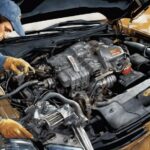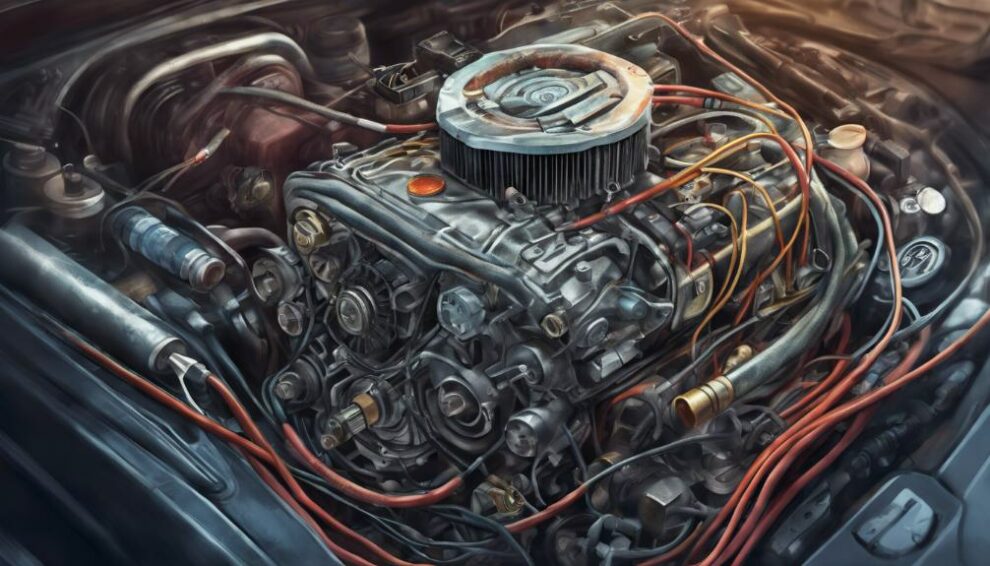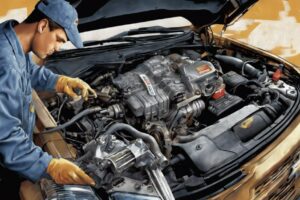When facing a P0526 code related to cooling fan speed sensor circuit problems, start by checking the electric cooling fan control circuit’s voltage reading.
Use a multimeter to measure voltage at various points along the fan sensor circuit, ensuring alignment with manufacturer’s specifications. Investigate wiring and connectors for corrosion or loose connections.
Symptoms include lack of audible clicking noise and occasional fast spinning sounds. Possible causes range from faulty cooling fan components to disrupted circuits due to corrosion.
Remember, a thorough electrical system inspection is important before replacing parts. If you keep exploring, more insights are ready to help you with the issue.
What You Need to Know
- Use multimeter to check voltage in fan sensor circuit.
- Investigate wiring and connectors for issues.
- Verify fan operation for visual confirmation.
- Test PCM/ECM reference voltage and sensor.
- Repair damaged wiring or replace faulty sensor.
Understanding P0526 Cooling Fan Speed Sensor
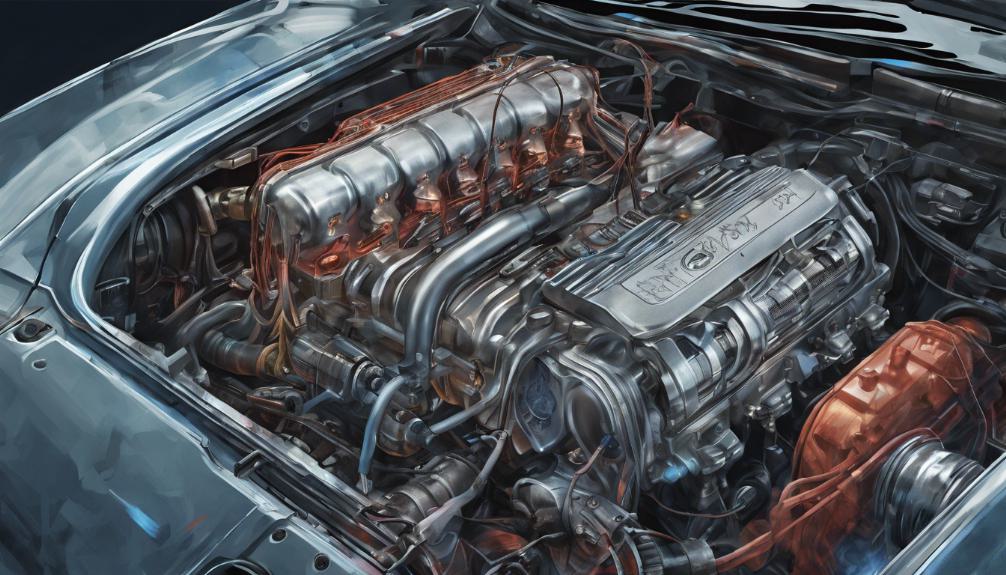
To understand the P0526 Cooling Fan Speed Sensor, focus on its critical role in monitoring the vehicle’s cooling system.
Fan sensor troubleshooting involves checking the voltage reading from the electric cooling fan control circuit.
When faced with a P0526 trouble code, it’s essential to analyze the voltage readings to pinpoint any irregularities.
Start by using a multimeter to measure the voltage at various points along the fan sensor circuit.
Make sure that the readings align with the manufacturer’s specifications.
If there are discrepancies, investigate further into the wiring and connectors to identify potential issues like corrosion or loose connections.
Understanding the voltage readings is vital as they provide insights into the health of the cooling fan speed sensor circuit.
Symptoms of P0526 Code
Experiencing intermittent appearance and disappearance without a consistent pattern, code P0526 may indicate underlying issues with the vehicle’s cooling fan speed sensor circuit.
When dealing with the symptoms of this code, it’s important to be observant and proactive in diagnosing the potential problems.
Here are some key signs that may suggest a P0526 issue:
- Lack of audible clicking noise during vehicle operation, pointing to fan clutch troubleshooting.
- Occasional fast spinning sound at initial start-up could be a red flag for P0526.
- Absence of other error codes alongside P0526 directs attention to the fan clutch or wiring harness.
- The presence of P0526 may highlight underlying engine cooling system issues, necessitating thorough examination.
- Inconsistent behavior of the code should prompt a closer inspection of the fan clutch and related components to resolve any potential malfunctions efficiently.
Stay vigilant for these symptoms to address P0526 promptly and ensure efficient functioning of your vehicle’s cooling system.
Common Causes of P0526 Issue
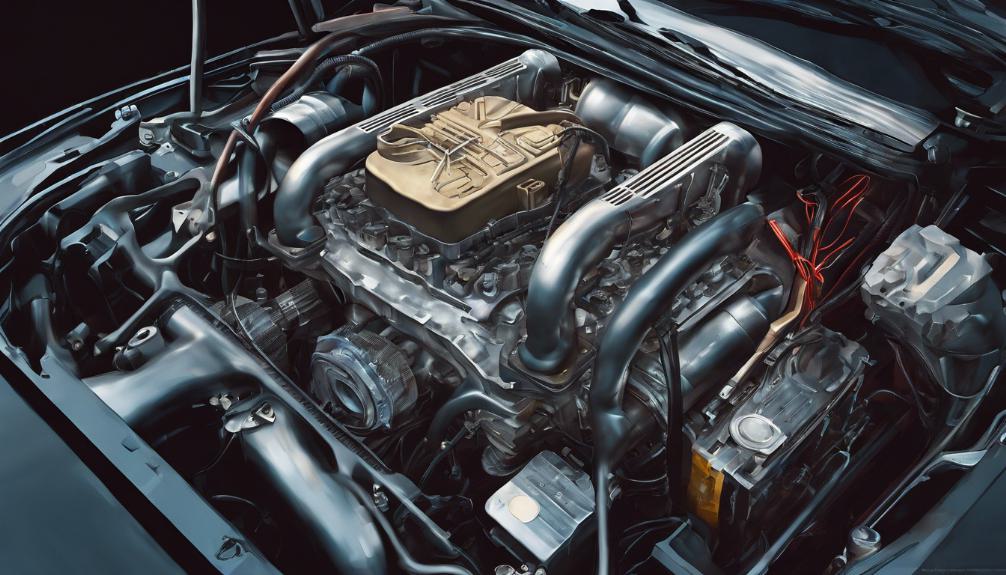
If you’ve noticed symptoms of code P0526, such as an illuminated Check Engine Light or potential engine overheating, understanding the common causes of this issue is important for effective diagnosis and resolution.
One significant cause of the P0526 code is a faulty cooling fan motor, relay, or engine coolant temperature sensor. These components play vital roles in regulating the cooling fan speed sensor circuit.
Another frequent culprit is corroded electrical components or shorted/open wiring, which can disrupt the proper functioning of the circuit.
When facing a P0526 issue, it’s essential to take these factors into account before proceeding with any repairs.
To address the P0526 problem, consider conducting a thorough electrical system inspection.
This inspection should involve a detailed examination of the wiring, connectors, and other electrical components related to the cooling fan system.
While fan motor replacement might seem like a quick fix, it’s important to approach the issue systematically and avoid premature part replacements.
By focusing on an electrical system inspection first, you can pinpoint the exact cause of the problem and implement an effective solution.
Diagnosing P0526 Code
Begin by connecting an OBD-II scanner to the vehicle’s diagnostic port to retrieve the trouble code for diagnosing the P0526 issue. To effectively diagnose the P0526 code, follow these testing procedures and troubleshooting tips:
- Inspect the wiring and connectors in the cooling fan circuit for any signs of damage or corrosion.
- Clear the P0526 trouble code from the PCM memory and observe if it returns after a test drive.
- Use a multimeter to check the voltage and continuity at various points in the fan speed sensor circuit.
- Test the cooling fan motor and relay to make sure they’re functioning correctly.
- Consider checking the engine coolant temperature sensor to rule out any related issues.
Solutions for P0526 Cooling Fan Problems

Inspect the electrical fan circuit for faults or issues that may be causing the P0526 code. Proceed to verify fan operation visually to confirm proper functioning.
Troubleshooting techniques involve checking the cooling fan sensor harness for damage or disconnection.
Test the PCM/ECM reference voltage to pinpoint any powertrain control module-related problems.
Also, test the continuity and signal voltage of the cooling fan speed sensor to diagnose the root cause accurately.
Repair options may include fixing any damaged wiring, replacing the cooling fan sensor if faulty, or addressing issues with the powertrain control module. By following these steps, you can effectively address P0526 cooling fan problems.
Remember to conduct each test methodically and refer to vehicle diagnostics if needed for a thorough repair process.
As an Amazon Associate we earn from qualifying purchases.



